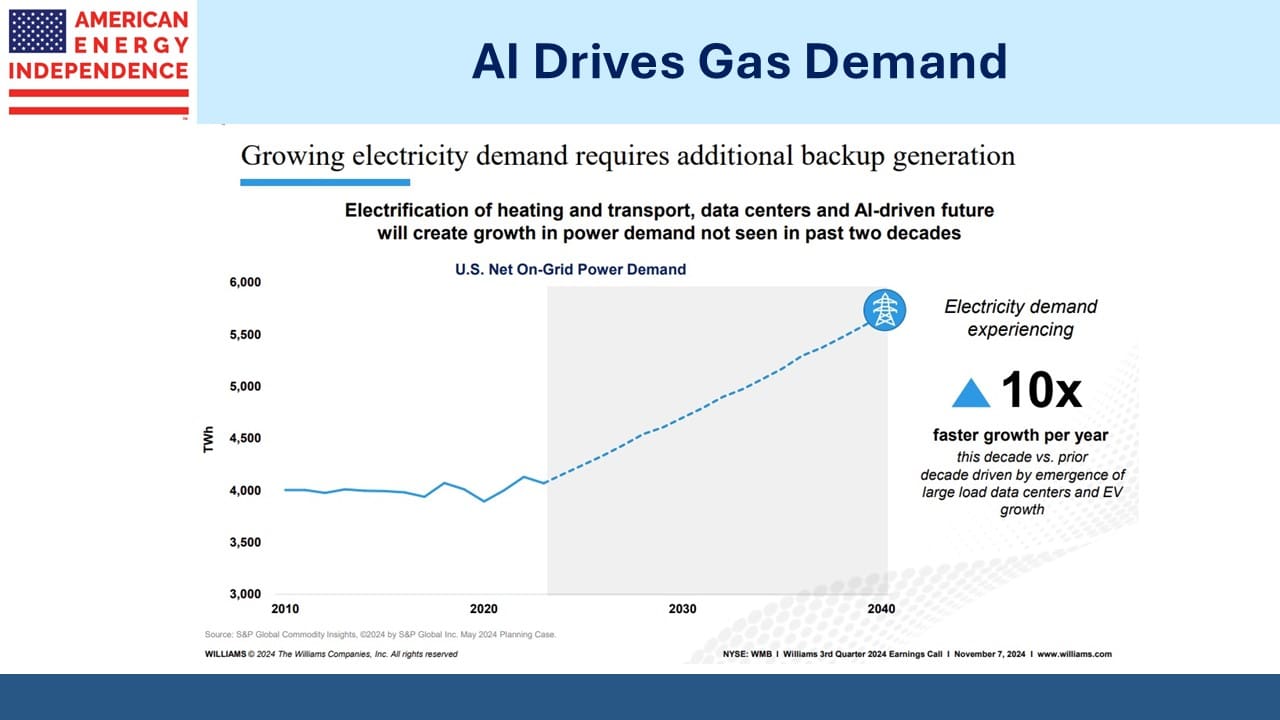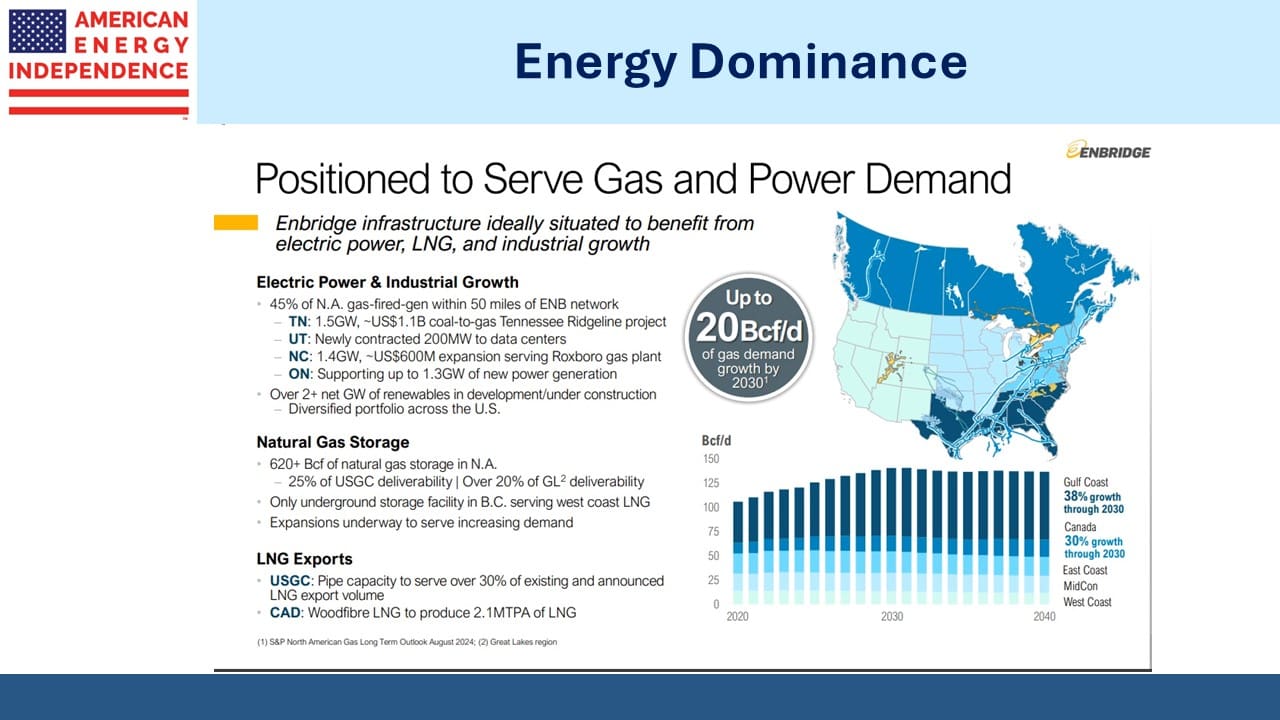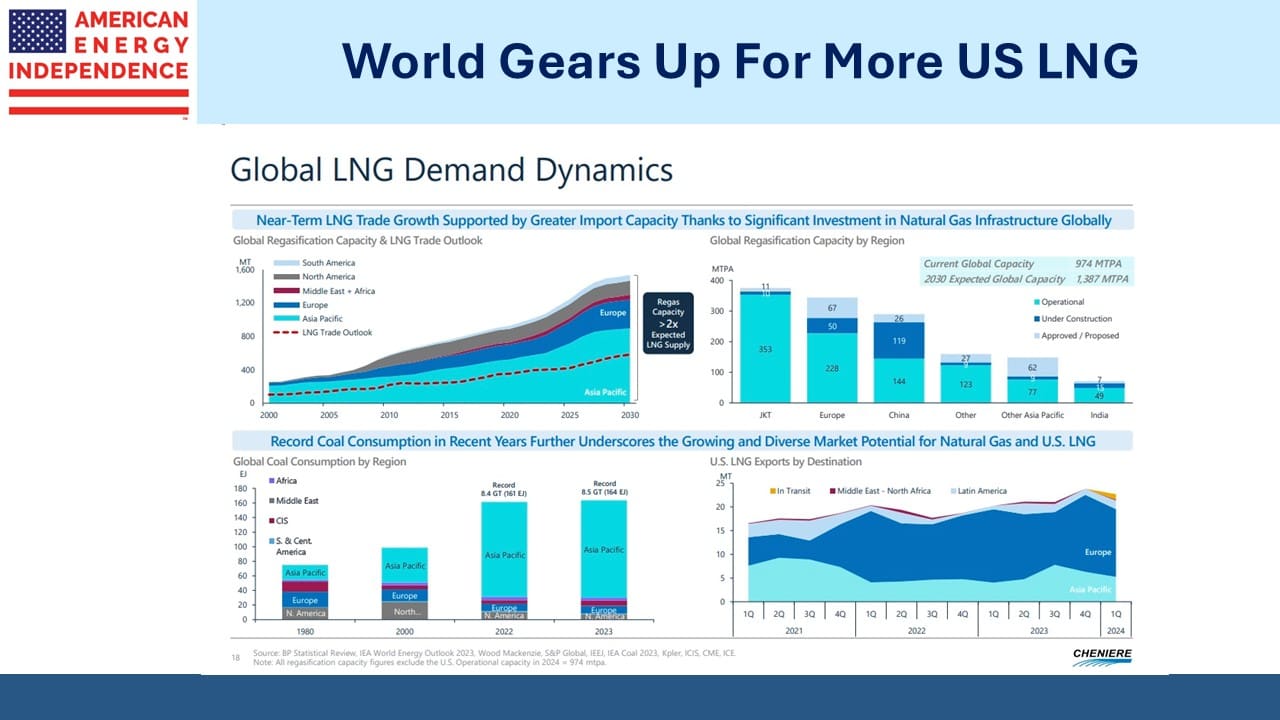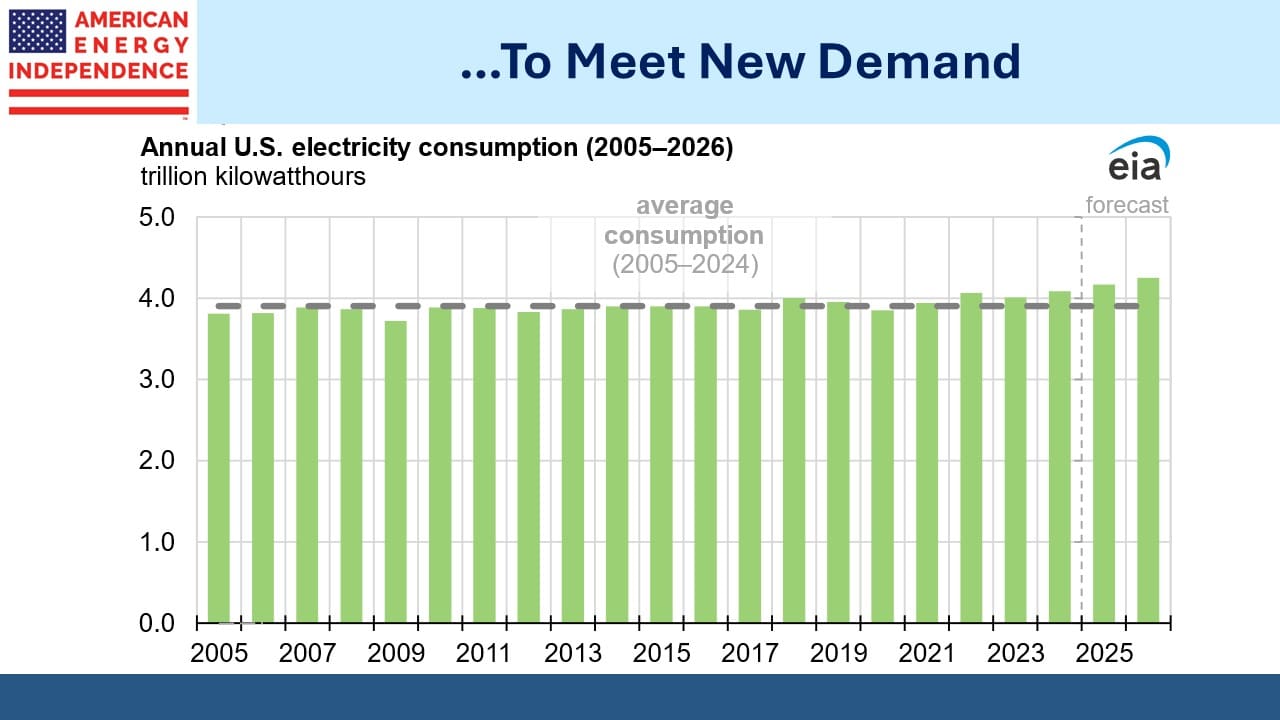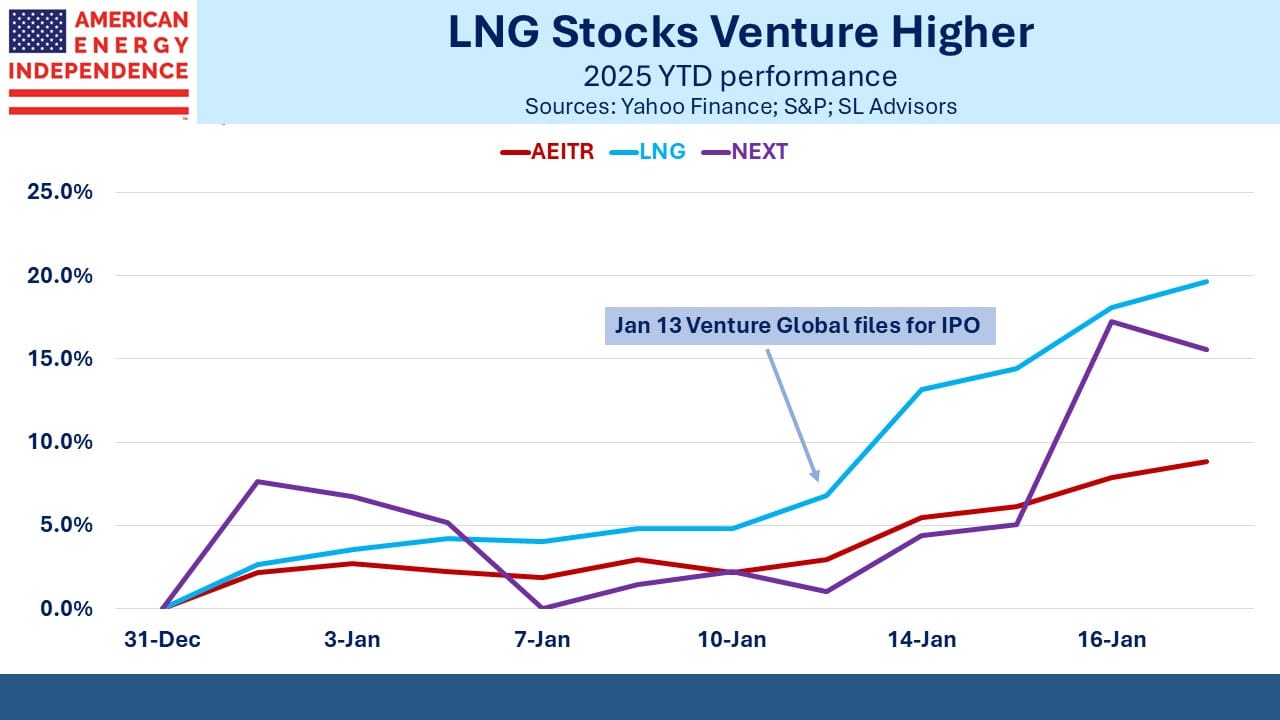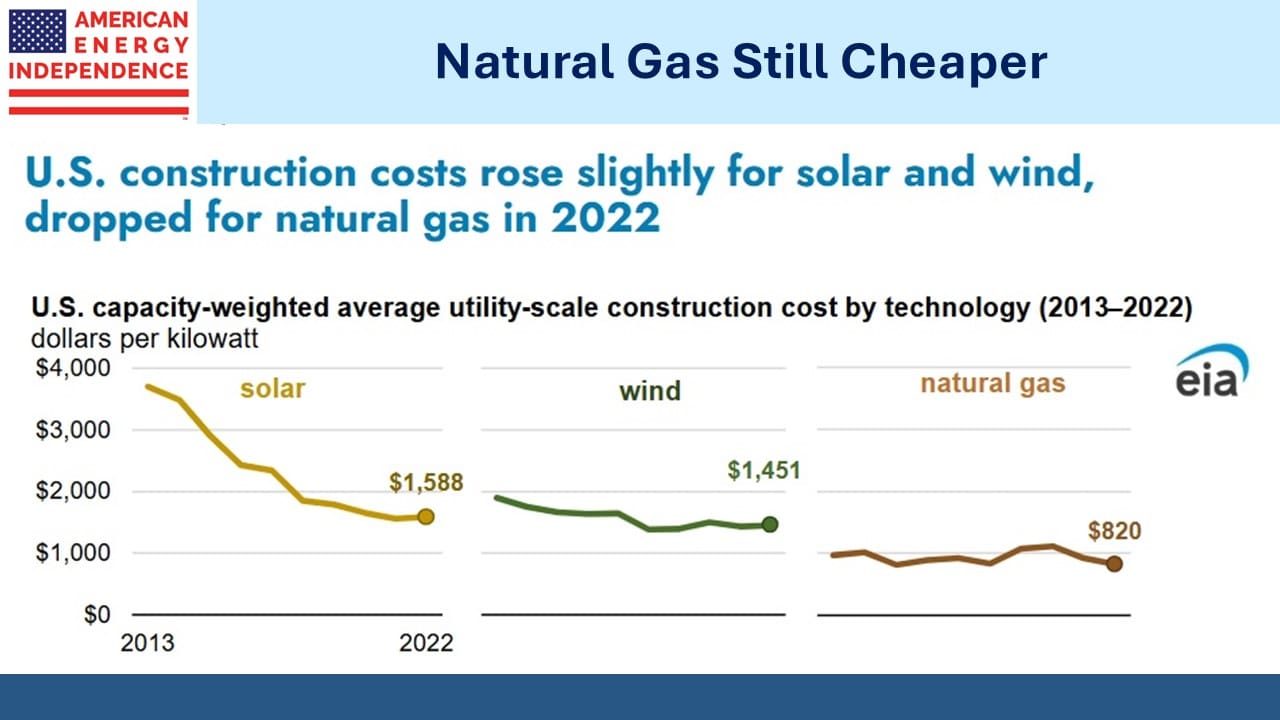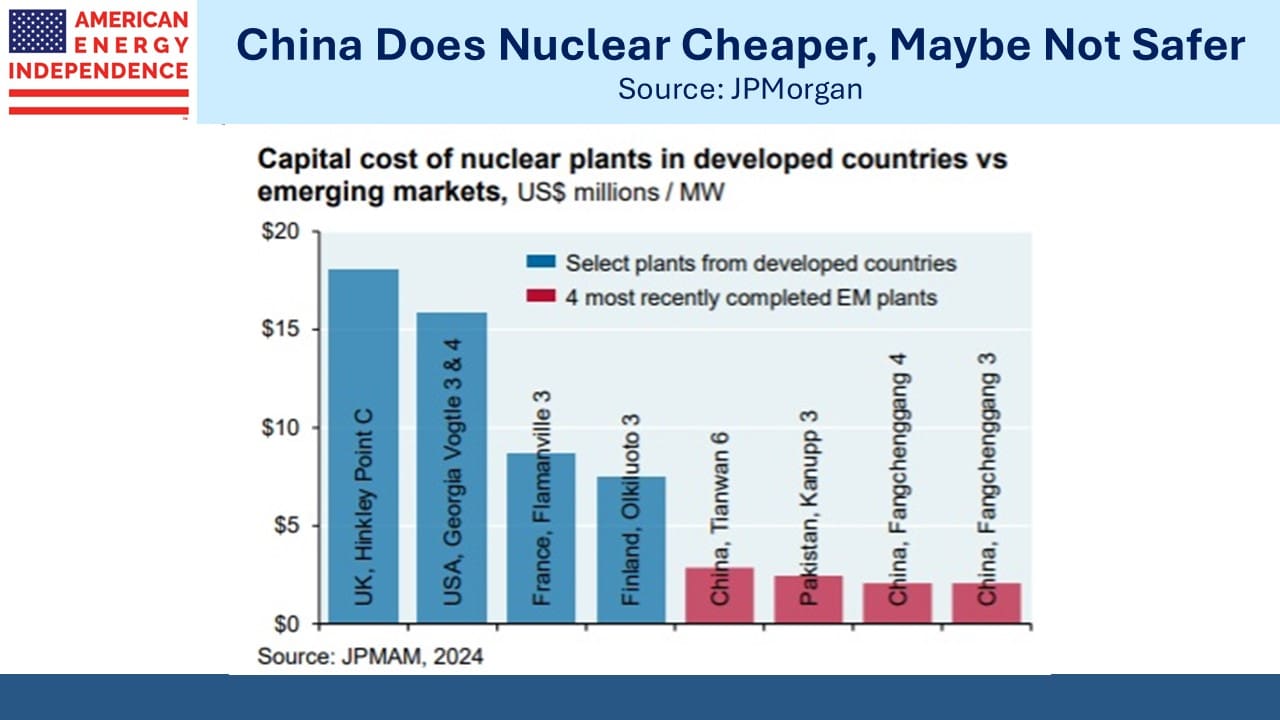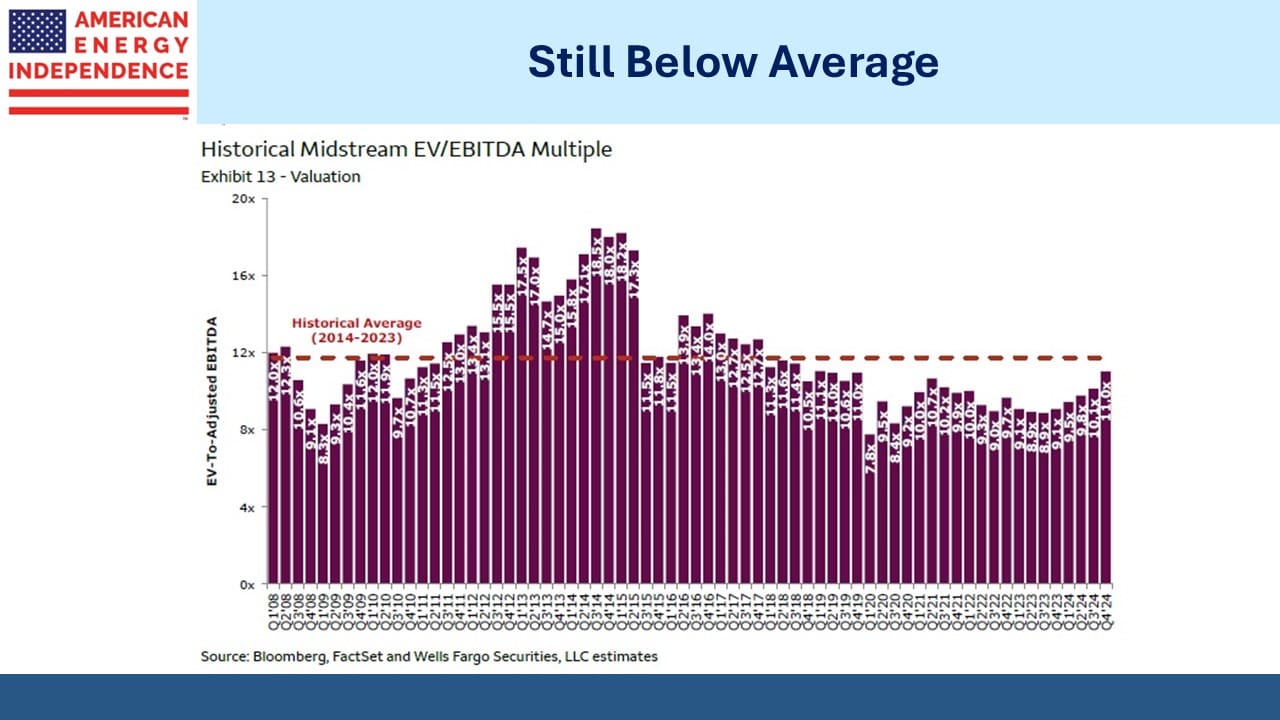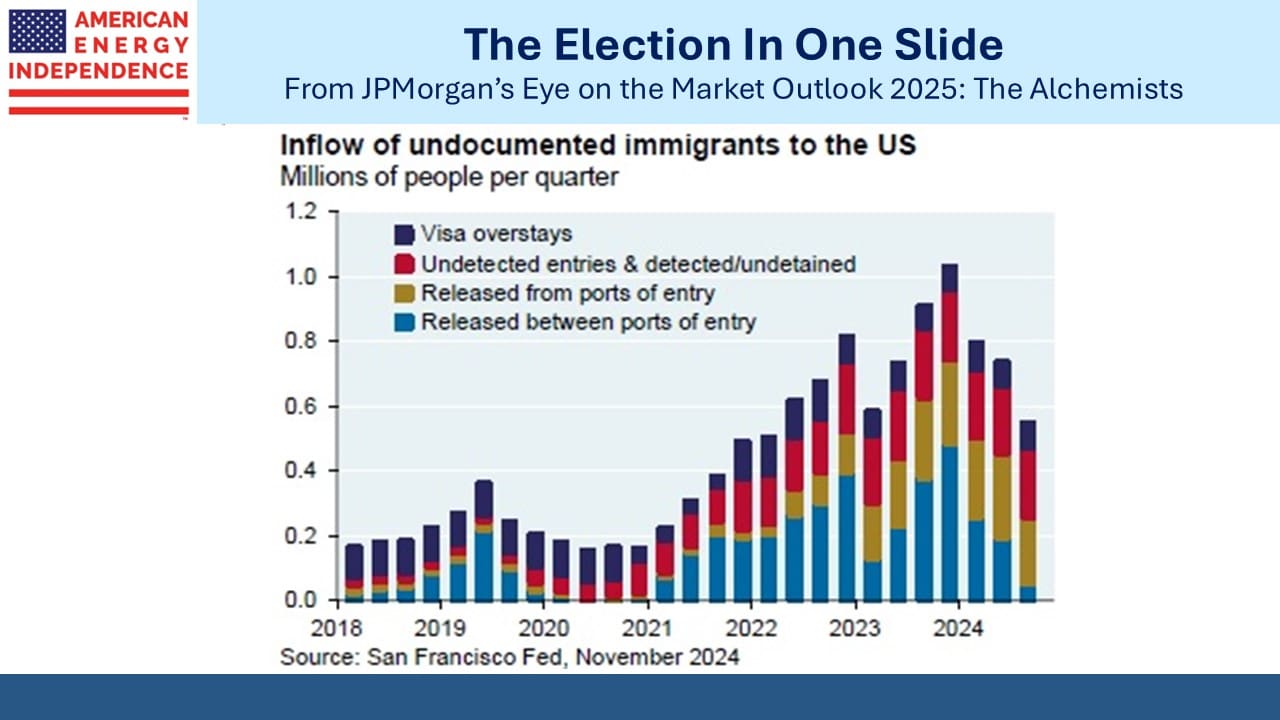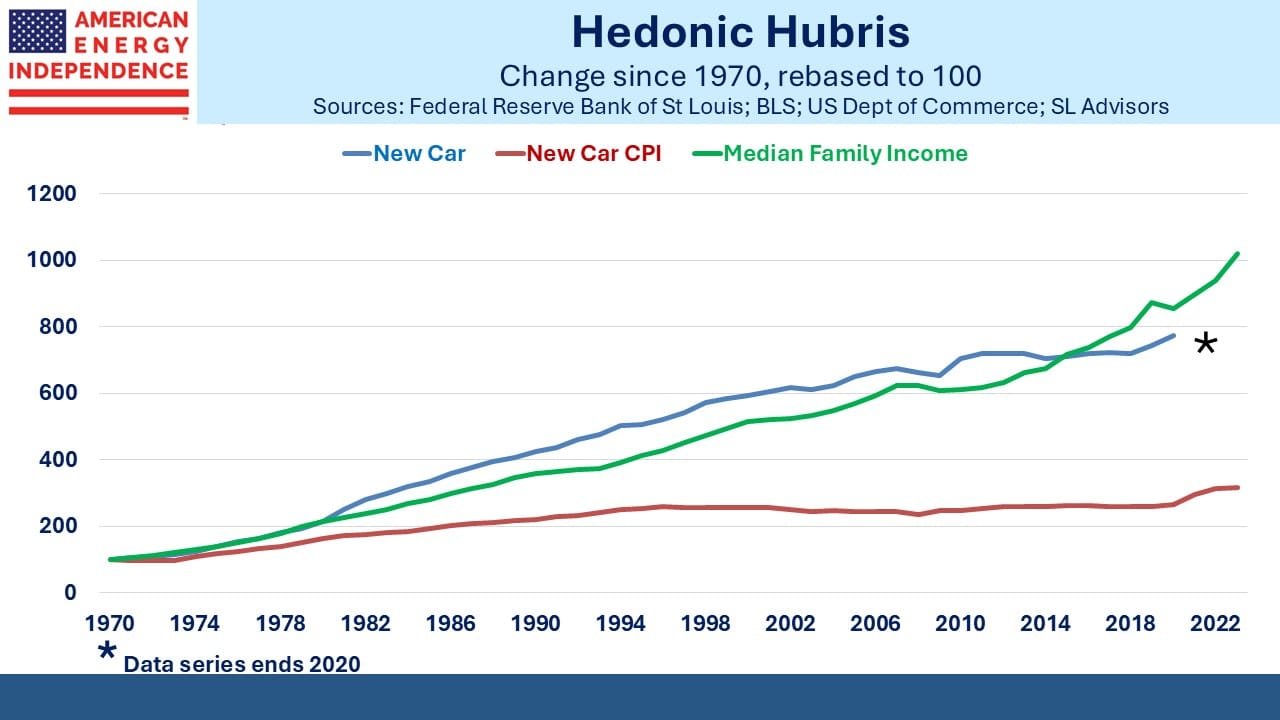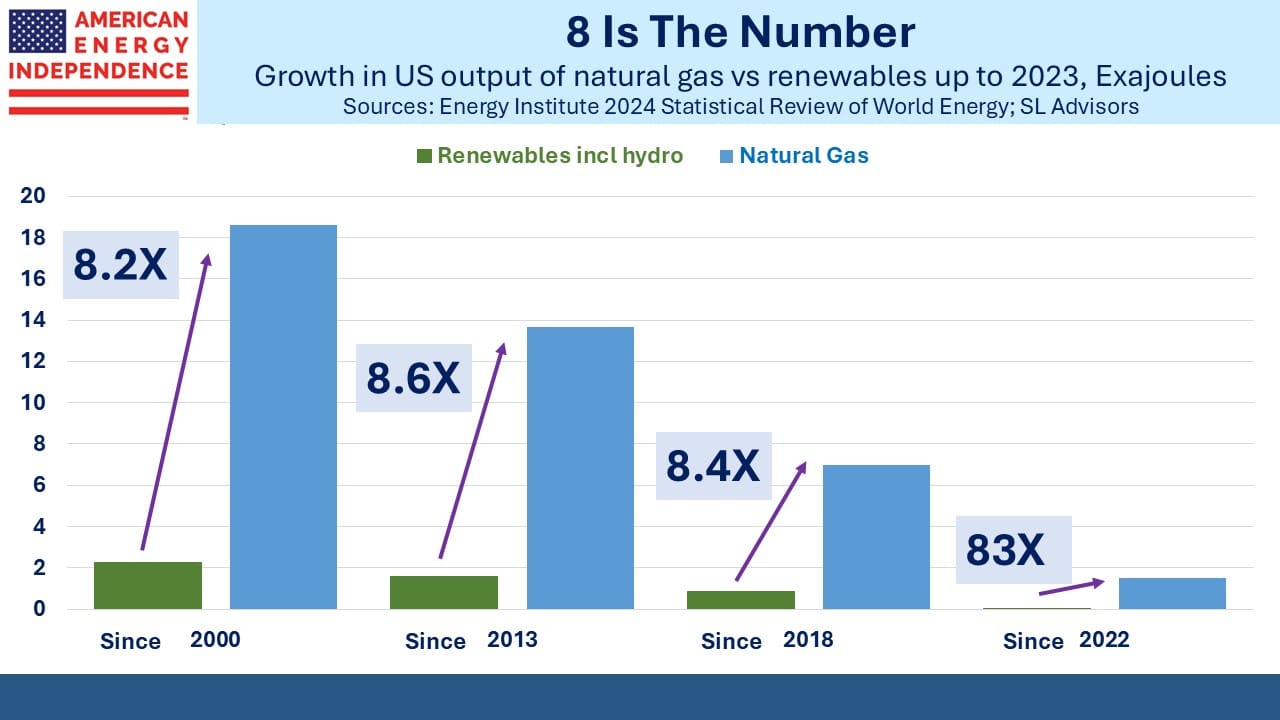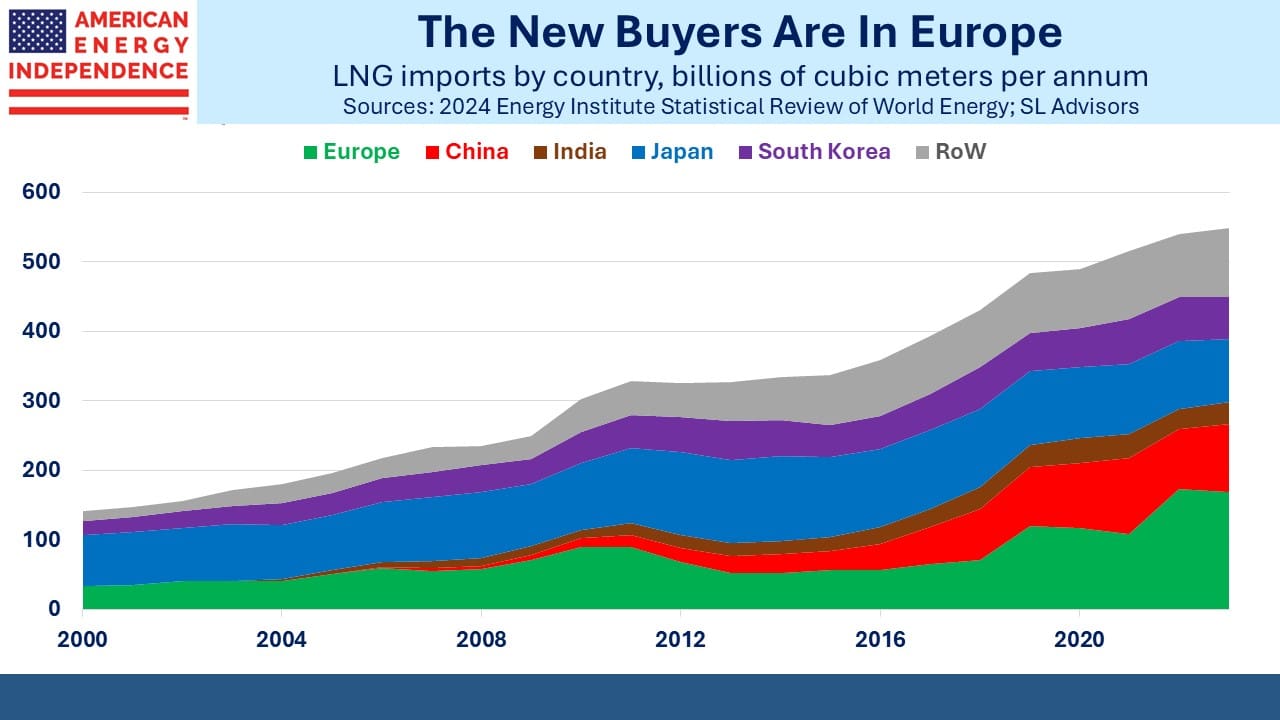The Energy Story’s Trifecta

I was chatting with an investor the other day, and he remarked that there are three powerful legs to the midstream story. They are demand growth for natural gas; attractive valuation; the incoming administration’s support for traditional energy. He felt that there’s too little appreciation of the underlying support from these three elements.
Last year the market began to appreciate the likely impact of new data centers on natural gas demand growth. Renewables remain a footnote in terms of actual US power generation. Solar and wind produce 16% of our electricity while natural gas is 43%.
We’re enjoying the Natural Gas Energy Transition because growth in production is 8X that of renewables – over the past five years, ten years and for all of the 21st century.
S&P expects data centers to add between 3 Billion Cubic Feet per Day (BCF/D) and 6 BCF/D to gas demand by 2030.
Williams Companies expects power demand to grow at 10X the pace of the past decade. Much of this will be supplied by natural gas, but even where intermittent energy plays a role it’ll require natural gas back-up because data centers don’t only run when the weather co-operates.
Kinder Morgan sees natural gas demand up 19% by the end of the decade (around 20 BCF/D). Increased LNG exports and pipeline sales to Mexico will add to industrial sector demand.
Canadian pipeline company Enbridge has a similar growth forecast for natural gas across North America.
The demand for US LNG is supported by investments many importing countries have made in regassification facilities that allow them to convert gas from the near-liquid form in which it arrives by tanker back in to the gaseous form required by users.
Cheniere notes that global regassification capacity is 2X the expected supply of LNG, which shows that demand is likely to be more than equal to supply over the next several years.
The positive demand story would be unremarkable if it was reflected in high valuations for midstream stocks, but it’s not. The S&P500 trades at around 25X 2025 Factset EPS. Although valuation isn’t a good timing tool, this is historically not an attractive comparison with bonds.
By contrast, large cap pipeline stocks trade on average 10 turns cheaper at a P/E ratio under 15X (see Pipelines Are Cheap; Stocks Are Not).
Distributable cash flow yields, which represent free cash flow less maintenance capex, are over 11%, more than 3X the equivalent for the broader market.
As we often tell people, there’s no irrational exuberance present in this sector. Valuations and fund flows still exhibit excessive caution in our opinion.
Completing the trifecta, we have a new administration that is fully behind US oil and gas production. In his inauguration speech Trump even repeated “drill baby, drill.”
Chris Wright, the new Energy Secretary, brings a pragmatic and refreshing approach. He acknowledges climate change but rejects the dystopian view of progressives. He will be a strong advocate for US LNG exports which will help foreign buyers use less coal. The ludicrously partisan permit pause on new LNG export terminals will finally be lifted.
An improved regulatory environment will lower costs for E&P companies, but all signs are that increased output will need to be profitable.
US energy underpins America’s past decade of strong growth and rising living standards. As Germany has pursued its energy transformation (“Energiewende”), electricity prices have soared and manufacturing has slumped, all while global CO2 emissions have continued rising. It’s a pointless effort while China burns 55% of the world’s coal and plans to go higher.
Democrats and liberal politicians in other western countries have pursued ruinously expensive subsidies for renewables and electrification of transport while applauding China’s auto market where EVs now exceed a 50% market share. This is even though they run on coal which is their dominant source of electricity.
President Trump obviously won’t engage with China on climate change. But had he signed the Inflation Reduction Act with its $TNs of financial support for renewables, you know he would have confronted China over their emissions first.
Compelling fundamentals and attractive valuations co-exist in President Trump’s favorite sector. Energy investors got the election outcome they wanted. Some will recall that Trump’s first term in office coincided with poor returns as executives overspent and overproduced. Profits returned under Biden in spite of his leftward shift once in office.
We think Trump’s second term will be much better for energy investors than the first.
We have two have funds that seek to profit from this environment:
Energy Mutual Fund Energy ETF


